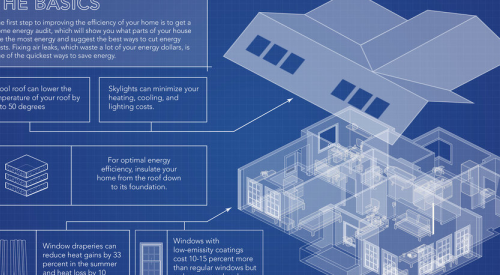There are a number of reasons builders might make the decision to switch building products, materials, or systems. A different product may offer first-cost or labor savings over your current product. Or perhaps it will make your homes more energy efficient or green, and thus more marketable to potential buyers.
Regardless of the reason, switching products does pose risks and challenges for builders. Because of all the factors that need to be considered for even a seemingly minor product switch in residential construction, many builders take an “if it ain’t broke, don’t fix it” approach and stick with what they’ve always used.
At its core, the NAHB Research Center’s mission is to help advance new products and technologies that can improve housing affordability, durability, quality, and performance. Part of our work involves helping builders take some of the guesswork out of using new products through resources like our ToolBase.org, field evaluations, and laboratory testing. Don’t let fear of the unknown discourage you from trying a new or innovative product, as the reward may outweigh the risk. However, do try to minimize the risk by addressing the seven key questions that follow.
1. Is it up to code?
When selecting any building product, make sure it meets your local building code. This is particularly important for products that affect life safety, but it holds true for any product or technology that is subject to inspection. Be sure you check with your local code official to avoid any added costs or delays in the construction process.
You can also see if the product has an ICC Evaluation Service (ICC-ES) Evaluation Report on file (ICC-ES has a complete listing of its reports online at http://bit.ly/9zoiwh). These reports provide evidence that products and systems meet code requirements and include information about how the product should be installed to meet code.
Beyond codes, make sure that your project is not subject to any private covenants that may restrict use of certain products or materials. Check with your homeowner’s association or architectural design committee to confirm that your plans and material and product selections are in step with these regulations, and consider obtaining written confirmation from the group.
2. Is it field tested?
Check to see if the product has been tested and proven in the field. If the product is not widely used in the industry, thereby limiting builder testimonials, field evaluation reports are the best way to get that type of information. Field evaluations are cooperative efforts between builders or remodelers, manufacturers, and a testing agency or engineering firm like the NAHB Research Center that evaluate the products in real-world conditions. Local or federal government agencies or utilities may also be involved in field evaluations.
The Research Center has been conducting field evaluations for decades and posts findings from some of its most recent evaluations on ToolBase.org. You can also find field evaluation results through product manufacturers, government agencies, and utility companies — but always consider the source and make sure the information presented is as unbiased as possible.
3. Will the manufacturer be there for support?
Find out if the manufacturer will provide support beyond the manufacturer warranty. For instance, will the company provide field training and support for your contractors? Will they provide support or guidance for your home buyers?
4. What about your insurance?
Check for exclusion provisions in your business insurance to ensure that the new product is not listed as “excluded” from coverage. An excluded product or system implicated in a legal claim could diminish your coverage and raise your risk.
5. Does it provide marketing benefits?
Weigh the marketing advantages that making a product switch may provide. If there is added cost up front, it may be balanced out by your ability to market, for example, a quieter or more energy-efficient home.
Be careful not to over-promise the benefits of your homes or the products in them. For instance, avoid any unsubstantiated claims about dramatic reductions in utility bills or improvements in occupant health, safety, or comfort. Be particularly careful when marketing green claims about your homes, and make sure to comply with Federal Trade Commission’s Green Guides. However, if there are supportable benefits of the product you are incorporating, don’t hesitate to highlight those for potential buyers.
6. Is it compatible with your other products?
Make sure you understand precisely how the new product will work with your current lineup of products and designs. You don’t want one intentional change to create a domino effect of unintended changes or potential warranty issues. Ask a manufacturer representative of either the new product or your current products to review your plans and assess the compatibility of all the products you’re using.
7. What’s the learning curve?
As with anything new, there will always be a learning curve involved with a product switch, but the rate of learning can be greater (and more costly) with some new products. Gauge how familiar your trade crews and superintendent are with the new product. If they have no experience, you’ll need to account for the time and cost involved in providing adequate training before the switch, as well as some extra supervision during the transition to ensure proper installation. Defective installation could negate the manufacturer’s warranty and open you up for liability if the homeowner experiences problems.
If the product is being implemented to attain some sort of external green or energy-efficiency certification or recognition, improper installation could hamper your ability to achieve that goal. Proper installation is always important, but even more so with high-performance or green homes, as they are more likely to have interdependent and complementary systems that create enhanced efficiency.
In addition, assess if your trades are overly resistant to the change you are proposing. Not that you can’t overcome this kind of opposition, but it’s better to know of the objections before making the switch than be surprised after the fact. Get to the root of the objections and see how you might be able to mitigate any negative feelings toward the switch.
Finally, a product switch may require you to educate your homeowners differently than you already do. Be sure your customer receives all the related maintenance and operations manuals, and that any non-standard instructions or manufacturer recommendations are built into your homeowner’s manual.
Created in 1964, the NAHB Research Center is a full-service product commercialization company that strives to make housing more durable, affordable, and efficient. The Research Center provides public and private clients with an unrivaled depth of understanding of the housing industry and access to its business leaders.












